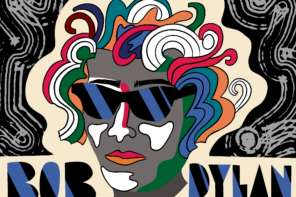If you’re currently college-aged, you were five or six when the first Spider-Man film came out, seven or eight when Spider-Man 2 came out, and around eleven when Spider-Man 3 disappointed you (not to worry, Iron Man and The Dark Knight would come out the next year). For the late-millennial audience, the superhero genre is not some massive studio gamble but the natural state of affairs, a genre established in the era. Ever since you could watch a movie and understand what was going on, Spider-Man was there, fighting Willem Dafoe’s glorious Green Goblin at the Macy’s day parade. We are still living in the house that Tobey Maguire built.
And yet when you remember these films, don’t they just seem so silly, so dated, so melodramatic? Maybe. They are dated, no longer the flashy spectacles from ten years ago. But, in hindsight they’re the first true event movies of the 21st century, the bedrock from which all our blockbuster cinema has bloomed. They are silly, but would it be preferable for these films, where a man dresses up as a latex spider and punches a robot octopus, to deny the inherent silliness? Would we prefer a brooding Peter Parker, as we got in 2011, or a bland Peter Parker as we have now?
The bias lies in the belief that these films are silly, dated, melodramatic, and that we shouldn’t take them seriously
That silliness needs the greatest defence of all. It’s not unintentional comedy, as some claim, but delightful, skillful, intentional comedy. We remember the wacky faces, the scenes at the Daily Bugle, the Macho Man Randy Savage cameos and the pizza delivery hijinks, and we presume it to be bad filmmaking, as if the film was aiming for The Dark Knight but landing on Macho Man. Spider-Man and Spider-Man 2 are comedies in the way that modern Marvel films can’t manage; they are funny rather than just jokey. Iron Man cracks one-liners and hangs around comic sidekicks, but there aren’t any set-pieces, gags, or visual jokes. Everything is reigned in before the audience is allowed to have more than the regulation amount of laughter. In these films, there is a sense of humour that underlies everything else.
It’s best to view these films as melodrama rather than action. By our standards the effects look fake, but their artificiality only adds to the charm, like the painted backgrounds of the 50s. Peter Parker is the greatest example of this retro sensibility. The first film is set in the present of the early 00s, with frosted-tip-sporting bullies and Macy Gray concerts, but Peter Parker is an old-fashioned nerd straight outta Pleasantville. His introduction to the world showed him running to catch the school bus, with everyone inside laughing and pointing, except Mary Jane but including the bus driver; the whole world is out to get this kid! How is he so convincing and so captivating? Because Tobey Maguire sells it. In the internet era, an era of Tobey Maguire face compilations, memes, and clickhole articles, we have forgotten the genuine strength of this performance. That he has such a meme-able face is no accident – it’s so easy to draw because it was drawn first. It springs right from the pages of the comic. When taken as a whole performance in a retrospective and self-conscious film, Maguire zooms past funny towards pitiful, heartbreaking, and triumphant. Our superheroes now are cool and captivating, but we don’t root for them the same way we root for Peter.
Spider-Man is a superhero but he’s no superhuman
We root for Peter because, though these films are as deliberately artificial as they come, he feels real to us, more than any other superhero. He’s more a man than a spider, and these films devote just as much screen time to his incredibly tight schedule as they do to the action. He’s constantly missing deadlines, asking for extensions on papers, biting off more than he can chew. In the action scenes, he doesn’t fly or use his super strength; instead, he has to pull himself up by a string, and carry a weight on his web that’s much too heavy for his small frame. His Spidey Sense must make him aware of every little thing that could go wrong. Somehow these films, about pizza deliveries gone wrong and wrestling matches with Bonesaw, manage more humanity and heft than almost any other blockbuster and certainly any superhero film.
These films are also class-conscious in a way the genre has never dared to touch since. “No jobs. Freelance! It’s the way of the future,” cracks J. Jonah Jameson when Peter Parker asks for a job at the Bugle. In the second film, he is constantly struggling to make rent, asking for too many advances than he can take, but refusing to take money from his aunt because he can’t bear the humiliation. In one bold scene that I am still heartbroken by, Mary Jane is walking out of her shift at a diner, still in her demeaning 1950s waitress uniform which she covers up with her trenchcoat, ashamed, when she talks to Peter about how well her dream of becoming an actress is going. These films touch on the indignity of working a menial job in a way that no other movie could handle, and we’ve never given them this credit they are due.
These two films were so powerful because they satisfied a societal need, not just a personal one
The first time the world saw Spider-Man onscreen, we weren’t exactly in a hopeful mood. 2002 was a tense year for America and an even tenser year for New York City. 9/11 had destroyed our sense of safety and heightened our sense of patriotism. When Spider-Man is talked about in its post-9/11 context, it’s usually in reference to the forgotten teaser featuring the twin towers, or all the American flags. Or this scene which is called “ridiculous” and “cheesy” because it’s emotional in a genre that subordinates emotion to action. The manifesto of Raimi’s hopeful spirit is spoken aloud in the scene: “You mess with Spidey, you mess with New York!” Spider-Man is a superhero but he’s no superhuman. He’s a struggling human being, pulling weight too big for him, and his only respite is the kindness of the people around him, forced into camaraderie by their situation. “You mess with one of us, you mess with all of us.”
Spider-Man 2 came the year of Hurricane Katrina, an event that shook our newfound confidence. It entered an America that was worried, scared, stressed, and provided a Peter Parker who’s seriously not on his game, losing his powers, finally succumbing to the stress in his life by giving up the title, until snapping out of it. Spider-Man 2 reassured us, and provided an incredible, immense relief with its ending, perhaps the most emotional ending to a blockbuster since the 1940s, as Mary Jane realizes Peter’s secret identity, runs out of her wedding and stands in his doorway to deliver a monologue that, even now, nearly brings me to tears thinking about it. “Isn’t it about time someone saved your life?” These two films were so powerful because they satisfied a societal need, not just a personal one. They were the pep talks for Americans in the hardest years to be American. When we weren’t feeling up to it, Mary Jane and Peter told us to “go get ’em, tiger.”
Somehow these films manage more humanity and heft than almost any other blockbuster and certainly any superhero film
There was a stretch, from around 2008 to 2015, when we wanted our superheroes to be superhumans. There was a sort of binary between the Slick N’ Standardized Marvel Comics Universe (MCU) and the Sweaty Depressing Fascist Nightmare DC Extended Universe (DCEU). Superheroes were either alien gods or billionaire geniuses, action heroes who can save the day and crack jokes while they’re at it, or Ubermensches plagued with the tragedy of their awesomeness. They weren’t worried about doing laundry, making it to class on time, getting the girl, or even their secret identity. In those years we chose to identify as the people on the ground being saved by The Avengers, gazing up in awe. Now, given the national mood, we have Thor films about colonialism, Guardians of the Galaxy films about abuse and trauma, and Wolverine films about entropy. We’ve even got a new Spidey; so it goes. It seems that when our leaders can’t stand in for our superheroes, we have to be each others’ saviours. And like Peter Parker, we may not be perfect, but we’re trying.
But for college-aged kids, Spider-Man 1 and 2 aren’t Bush-era reassurance, but a first introduction to form, to colour, to the thrill of what a film could do. Formally, structurally, emotionally, not a single superhero movie ever has come close to what Raimi achieved here. The genre has never been this exciting since. Am I biased because I saw these movies as a child? No. The bias lies in the belief that these films are silly, dated, melodramatic, and that we shouldn’t take them seriously. Because more than just being tender, earnest, and reassuring, these movies deserve to be studied and respected because they are powerful. And with great power comes great responsibility.








